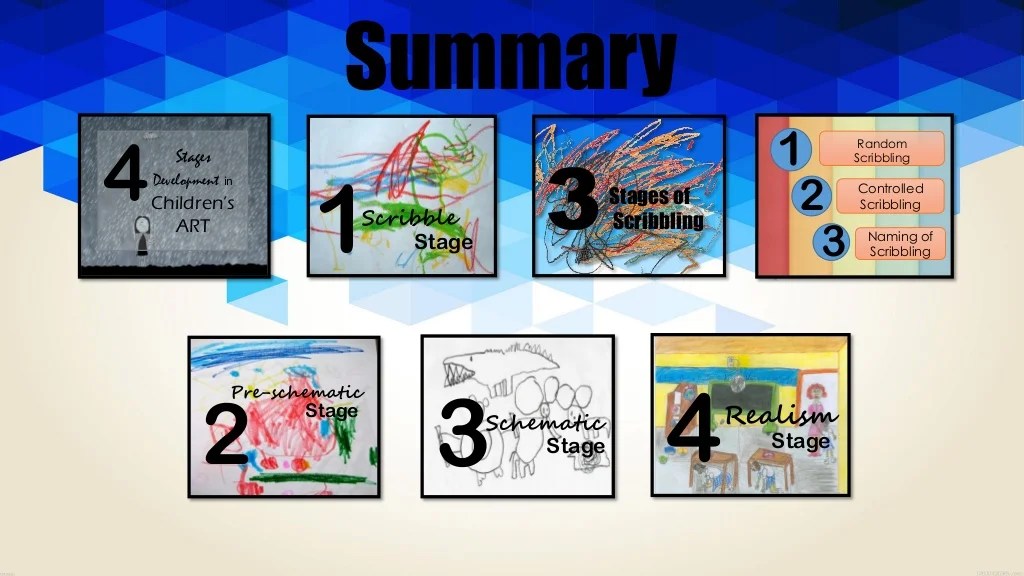Kellogg’s Developmental Stages of Art, a groundbreaking theory in art education, provides a comprehensive framework for understanding the evolution of children’s artistic expression. This model offers invaluable insights into the cognitive, perceptual, and social factors that shape artistic development, with significant implications for educational practices.
Kellogg’s six stages, ranging from scribbling to pseudonaturalistic, trace the progression of children’s artistic abilities as they develop their understanding of the world around them. Each stage is characterized by distinct features, from the random lines of scribbling to the representational forms of pseudonaturalistic art.
Introduction to Kellogg’s Developmental Stages of Art
Kellogg’s Developmental Stages of Art is a theory that describes the progression of children’s artistic development. Developed by Rhoda Kellogg in the 1950s, the model identifies six distinct stages that children typically pass through as they develop their artistic abilities.
Kellogg’s model is based on the observation that children’s drawings change in predictable ways as they grow older. These changes reflect the cognitive, perceptual, and social development of the child.
Overview of the Stages
Kellogg’s model identifies six stages of artistic development:
- Scribbling
- Preschematic
- Schematic
- Gang
- Realistic
- Pseudonaturalistic
Each stage is characterized by its own unique set of features. For example, scribbling is characterized by random, uncontrolled marks, while realistic drawings are characterized by their accuracy and detail.
Children typically progress through Kellogg’s stages in a sequential order. However, there is some variation in the age at which children reach each stage. Some children may skip a stage altogether, while others may spend more time in one stage than another.
Factors Influencing Development

A number of factors can influence children’s artistic development, including:
- Cognitive development
- Perceptual development
- Social development
- Environment
- Culture
- Individual differences
Cognitive development is particularly important for artistic development. As children develop their cognitive skills, they become better able to understand the world around them and to represent it in their drawings.
Applications in Education
Kellogg’s model can be used to assess children’s artistic development and to design art education programs. By understanding the stages of artistic development, teachers can provide children with the appropriate activities and support to help them develop their artistic skills.
For example, teachers can provide young children with scribbling materials and encourage them to explore different ways of making marks. As children progress through the stages, teachers can provide them with more challenging activities, such as drawing from observation and creating realistic compositions.
Critique and Extensions: Kellogg’s Developmental Stages Of Art

Kellogg’s model has been criticized for being too simplistic and for not taking into account the individual differences between children. However, it remains a useful tool for understanding the general progression of children’s artistic development.
In recent years, researchers have extended Kellogg’s model to include additional stages, such as the “emergent” stage and the “post-naturalistic” stage. These extensions have helped to make Kellogg’s model more comprehensive and to better account for the diversity of children’s artistic development.
Questions and Answers
What are the key stages in Kellogg’s model?
Kellogg’s model comprises six stages: scribbling, preschematic, schematic, gang, realistic, and pseudonaturalistic.
How does Kellogg’s model contribute to art education?
Kellogg’s model provides a framework for assessing children’s artistic development and designing age-appropriate art education programs.
What factors influence children’s artistic development?
Cognitive, perceptual, and social factors, such as age, experience, culture, and environment, all play a role in shaping children’s artistic abilities.